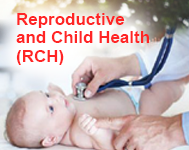Govt. Of India started National Leprosy Control Programme in 1955 based on Dapsone domiciliary treatment, through vertical units, implementing survey education and treatment activities. It was only in 1970s that a definite cure was identified in the form of Multi Drug Therapy. The MDT came into wide use from 1982, following the recommendation by the WHO Study Group, Geneva in October 1981. Govt. of India established a high power committee under chairmanship of Dr. M.S. Swaminathan in 1981 for dealing with the problem of leprosy. Based on its recommendations the NLEP was launched in 1983 with the objective to arrest the disease activity in all the known cases of leprosy. However coverage remained limited due to a range of organizational issues and fear of the disease and the associated stigma. Districts were covered in a phased manner and all the districts in the country could be covered only by the year 1996. At this stage in view of substantial progress achieved with MDT, in 1991 the World Health Assembly resolved to eliminate leprosy at a global level by the year 2000. In order to strengthen the process of elimination in the country, the first World Bank supported project was introduced in 1993.
Leprosy is caused by Mycobacterium Leprae, which morphologically resembles Mycobacterium Tuberculosis. The reservoirs of leprosy is/are infectious leprosy patient (s) who are not taking Multi Drug Therapy (MDT) and is in prolonged contact with healthy persons. Only less than 20% of leprosy patients are of infectious type and with modern Multi Drug Therapy, these patients become non-infectious very rapidly. Even single dose of MDT kills 99.9 % leprosy bacilli under laboratory conditions. There is no threat of disease transmission if the patient is taking treatment at home. It takes only six months to one year of complete treatment with MDT to cure pauci-bacillary and multi-bacillary type of patients respectively. Leprosy bacilli have very weak potential of causing the disease and they multiply very slowly as compared to most other bacteria. Under the programme, domiciliary treatment is advised. Leprosy deformity is not associated with infectivity of the disease and the patients seen with mutilated hands/feet etc. are mostly old already treated cases with no active disease and thus do not transmit infection.






